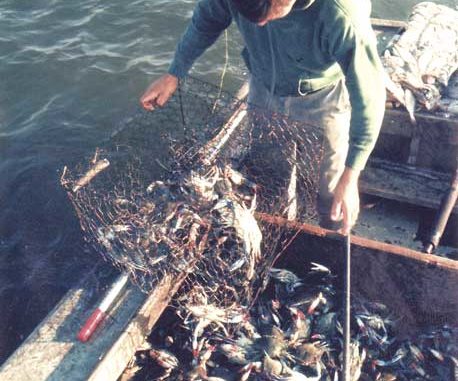
Head south of DuLarge to catch speckled trout until your arms just can’t take it any more.
This summer, like each summer for the last dozen or so years, we will get our annual report on the size of the Gulf of Mexico “dead zone.” This year as well, the Bonnet Carre Spillway was opened, releasing large quantities of nutrient-rich Mississippi River water into Lake Pontchartrain and the surrounding wetland system. Often, smaller dead zones develop in the lake after spillway openings.The causes of these hypoxic zones, as they are more properly known, are algae blooms, vigorous growths of phytoplankton. These microscopic, one-celled plants are the basis for almost the whole food chain in marine waters and for much of it in fresh waters, as well.
Basically, they use the same nutrients that land plants do, such as nitrogen and phosphorus, to convert the energy from the sun into plant growth. Without algae, other sea life would die.
Too much algae, on the other hand, can be a bad thing. Algal overgrowths (blooms) can be either natural or caused by human activities. Drawing the line between the two is sometimes very difficult. Many researchers feel that noxious algae blooms are on the increase worldwide.
Algae blooms occur when any change in water chemistry takes place that favors algae growth. When zooplankton, the almost microscopic animals that feed on the phytoplanktonic algae (and are the next link in the food chain) can’t eat fast enough to control the algae, several things can happen:
1) In fresh or near-fresh waters, blue-green algae may multiply until their dead cells form a film that looks like bright green paint on top of the water. In some cases, fish from these waters develop an “off-flavor,” making them almost inedible.
A few blue-green algae release toxins into the water that can weaken or kill fish and other animals. Finally, when blue-green algae cells die off, their decay (which requires oxygen) can remove enough oxygen from the water to kill fish.
Blue-green algae have been involved in algae blooms in Lake Pontchartrain after previous spillway openings.
2) A brown tide may occur. The algae involved in brown tides, Aureoumbra langunensis, does not kill fish. It simply turns the water the color of tea with a little cream in it. Their effect is to shade out other plant life, like seagrasses, from the sun and kill them, changing the ecosystem. Brown tides have occurred off and on for nearly 20 years in the Texas Laguna Madre, a 120-mile-long system of bays that used to hold sparkling clear water.
3) A dinoflagellate outbreak may occur. Dinoflagellates are strange, having some of the characteristics of plants and some of animals. They are one-celled, and for the sake of this discussion, will be considered algae.
While rare off Louisiana’s coast, a first-ever red-tide outbreak here in the mid-1990s was caused by the dinoflagellete, Gymnodinium breve. At high concentrations, its cells turn the water a reddish color.
They release a nerve toxin that kills fish and other animals, including dolphins and birds. The toxins can cause respiratory problems for beach-goers who inhale surf spray and even skin irritation to swimmers. The toxin can also cause nausea, vomiting and neurological problems for people who eat shellfish taken from affected waters.
4) Finally, large algae blooms can cause hypoxic water conditions. Hypoxia is when little or no oxygen exists in layers or all of the water in an area.
The “dead zone” in the Gulf of Mexico is a hypoxic zone. It occurs when otherwise “good algae” explode in numbers faster than the animals that feed on them can control.
These algae have very short lives. Like with blue-green algae, when they die in large numbers and sink to the bottom, their decay can remove enough oxygen from the water to suffocate bottom fish and animals.
The hypoxic zone in the Gulf of Mexico forms in the summer months, and may cover 6,000 to 7,000 square miles. The cause of the condition is believed to be a complicated interaction of high nutrients carried to the Gulf by the Mississippi River, physical changes to the river such as channelization and loss of natural wetlands and vegetation along the banks, and the layering of fresh water from the river over the salt water of the Gulf.
A significant part of the nutrients coming down the river come from human activities, including discharges from sewage treatment plants and rainwater run-off from farms and city streets. Some nutrients also enter the river and the Gulf directly from the air after being released by automobile engines and electrical power plants.
Scientists are undecided about whether to do anything about noxious algae blooms. Some say that algae blooms of some kind are a natural event and that nature should be left “hands-off.” Others claim human activities are causing more and larger blooms, and that unless action is taken, ecosystems and fisheries may be damaged.
Jerald Horst is an author of the Angler’s Guide to Fishes of the Gulf of Mexico, a 444-page, color-illustrated book on fishes written for saltwater fishermen. The book is available in better bookstores or can be ordered by calling 800-843-1724.


